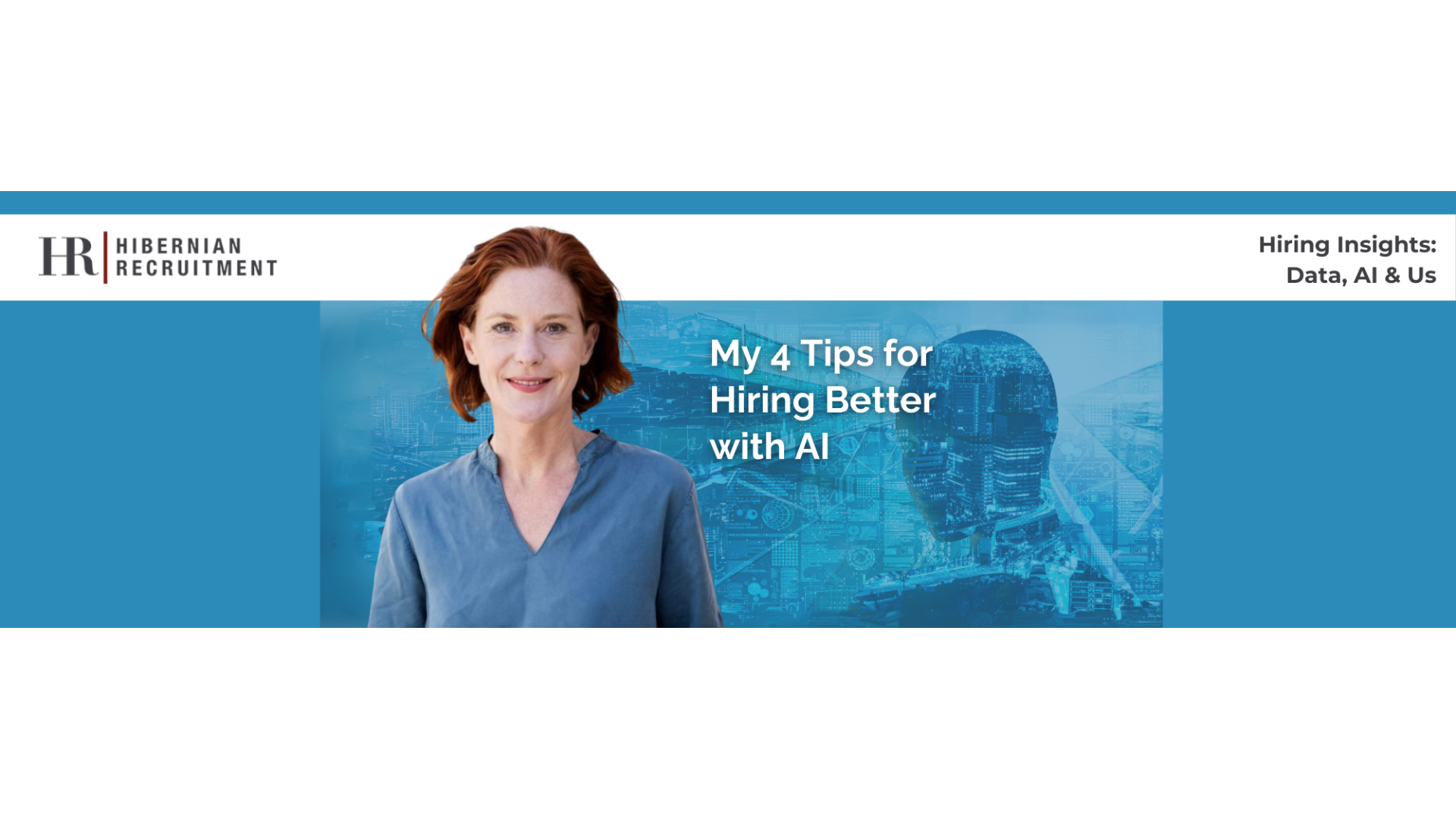
📣 EU AI Act & 4 Tips for Better Hiring 👨🏽💻🤖👩🏻💻
February is a landmark month for Europe and AI: the EU’s AI Act was ratified this week! While there’s been discussion around what this means for our personal data and for companies exploring opportunities with AI, what about the job market? Let’s delve into the topic in this edition of Data, AI & Us.
Make AI part of your Talent Strategy now
I’ve been focusing on data talent strategy for years, helping clients enable and prepare for this coming era of AI. Already more than a third of EU companies are using AI. Whether it enhances or displaces existing roles, AI is transforming our world. Here are 4 areas where I expect the most impact on the job market and 4 tips for what you can change to address each:
1. Get Comfortable with Creative Destruction
I think of AI’s influence as a kind of „creative destruction,“ a concept associated with economist Joseph Schumpeter. It’s “out with the old, to make room for the new” thinking. Some of us remember when the rise of on-demand streaming disrupted brick and mortar video rental. Likewise, it’s inevitable that AI innovation will render some jobs obsolete while giving rise to new and exciting profiles and industries. It’s happening already, for example at DHL and other companies according to an article in Bloomberg News, which reported that cuts were made “…because the technology replaced tasks…” but also “to free up resources to hire people with AI experience…” Let’s focus on which jobs are being created in this transformation.
2. Get to Know the New Profiles: Trainers, Explainers and Sustainers
We can’t see the future, but I can already see the changes in the requests I am receiving from clients. Additionally, at Hibernian Recruitment we cultivate a community of top data researchers in academia – one of my best sources of hidden data talent – who give me visionary insight into the direction of AI development. What’s ahead? With AI adoption we’re seeing an introduction of new job profiles related to large language models (LLM), in three main areas explained in this report from the World Economic Forum:
- Trainers: develop and maintain AI technology and systems, and include roles such as AI engineers or system administrators
- Explainers: are responsible for user-facing interaction, such as interface or functionality design of these new technologies
- Sustainers: ensure that the technology gets used appropriately – such as anyone from ethics and governance specialists to data curators.

3. Embrace AI-powered Candidates
In recruitment, AI used well can accelerate the journey between searching for candidates and filling crucial positions. With AI tools you can automate repetitive tasks in outreach and follow up workflows, winning more time for tasks requiring human nuance and creativity such as selecting and interviewing candidates – and updating your assessment process.
Why update your assessment processes? Because your jobseekers, especially any applying for roles in data, are harnessing AI to optimize their search. They will conduct a wider search with more options than before, and leverage AI to write their test code and writing samples. As a result, we need to alter how we assess motivation. And we need to test tech and creativity skills assuming the use of AI. Consider assessing candidates to discover:
- How candidates use available AI tools to enhance productivity and results?
- How candidates ensure good data privacy when using AI for productivity?
- Where do candidates see areas of opportunity created by AI in the new role?
4. Make every hire an AI hire
At a minimum, even for a non-technical role, we should be assessing how innovative and curious a candidate is about AI in general. Every new hire is an opportunity for AI aptitude and skills. In the interview are you asking candidates how are they exploring AI for themselves? Maybe in their current work or in their non-work hours? Which tools have they explored, which apps, what do they think about ethics and data usage? As AI adoption continues, its influence will extend beyond the industry bubble. Yes, it will shape how individuals, recruiters, and jobseekers navigate the evolving job landscape. It will also affect the majority of jobs through productivity improvements, workflows, data and more. Now is your chance to hire AI-ready talent in every role.
If you’d like to explore how AI-ready talent and recruitment strategies can support your organization’s future reach out through our contact form or DM me on LinkedIn. Let’s talk soon!
You can read the original article and find more sources on AI and the Job Market on our blog. We also have previously discussed many more aspects surrounding AI technology – emerging job profiles, the ethical frameworks around AI development, and potential use cases for generative AI, both in business and among freelancers.

